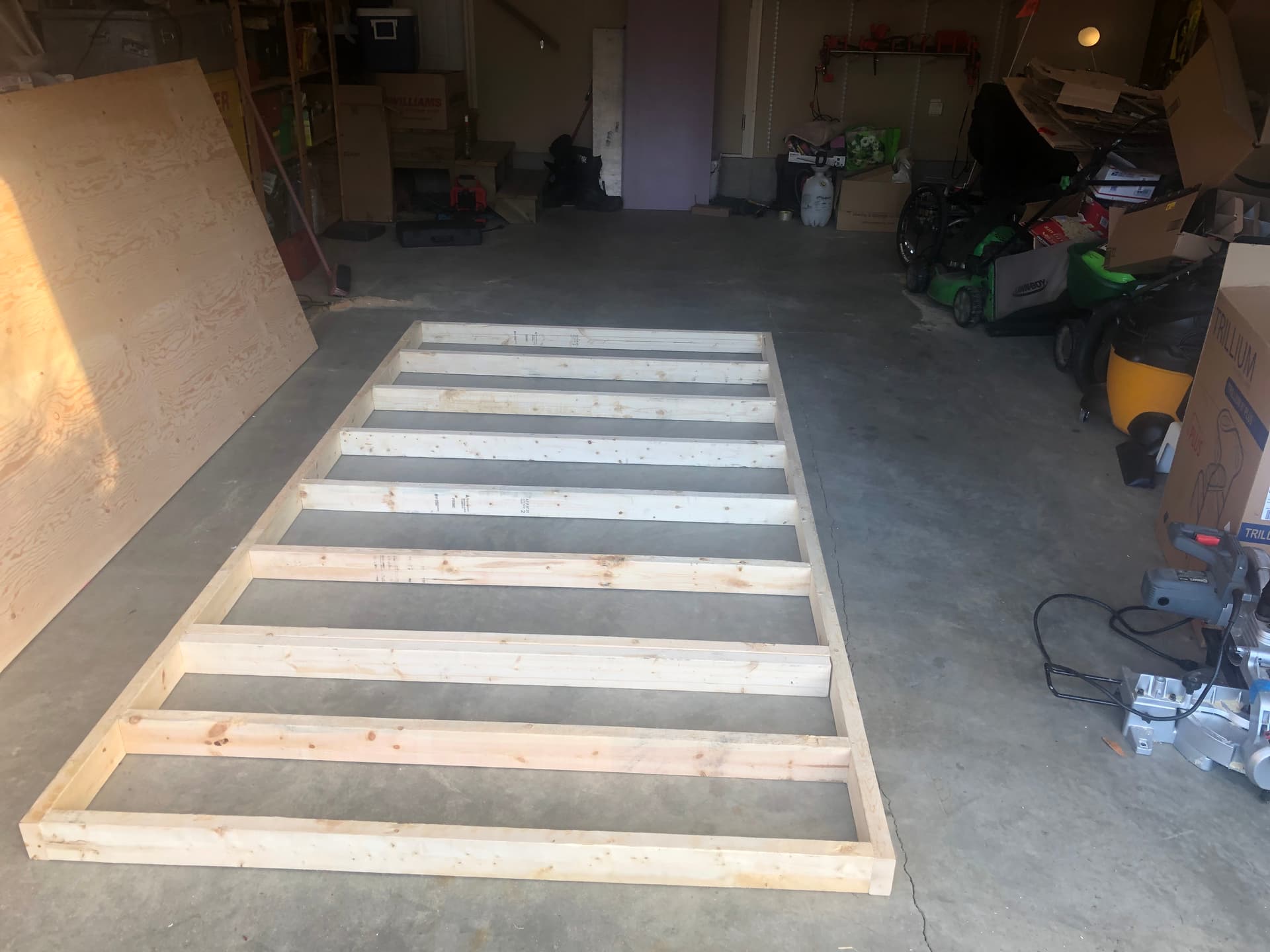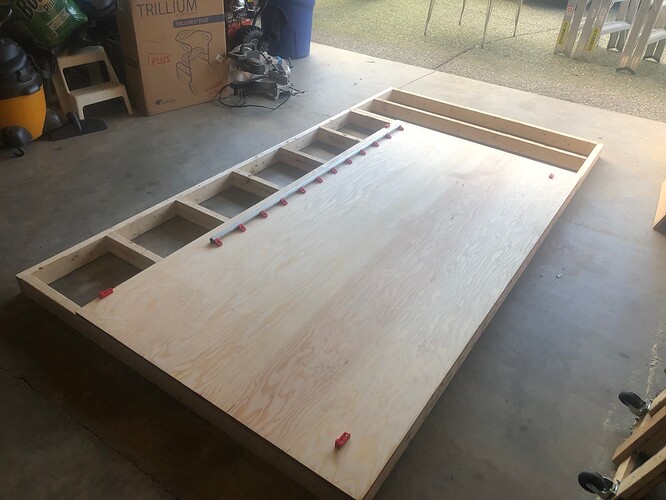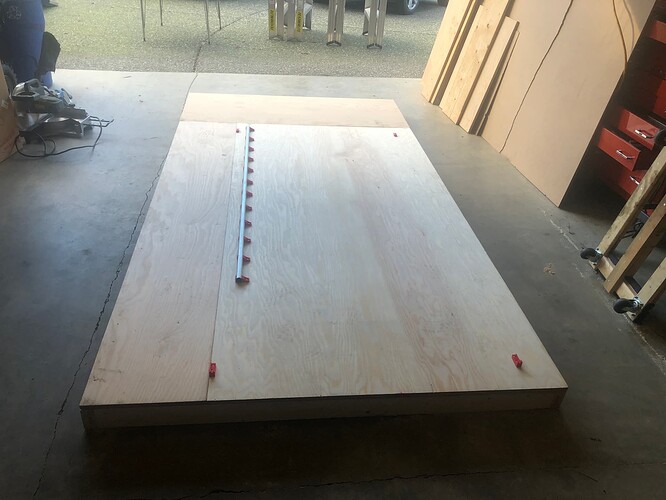Continued from Post #51…
The aforementioned flat-ish table #3:
Can support a 51" x 103" cutting area, although a more traditional 48" x 96" or 49" x 97" build would also fit nicely, with a few inches of elbow room to spare. 2 sheets of 3/4" ply, 7 sticks of 10’ 2x4s, and a couple of small bags of decking screws. Under $200 CDN, probably <$100 US


